Genre: Graphic Adventure Developer: Sasha Darko Publisher: WaterMelon Games/Mega Cat Studios Players: 1 Released: 2015
The Genesis has enjoyed an extensive life after Sega moved on with the Saturn, and there have been games released in just about every genre imaginable. We’ve seen shmups, run-‘n-guns, and hack-‘n-slashers, but one area that has been largely ignored has been the graphic adventure. The Genesis never had many to begin with (most appeared on the Sega CD to take advantage of that hardware), but developer Sasha Darko sought to help fill that gap with 2015’s Sacred Line, a unique experience that intertwines the elements of a dark horror novel with the interactive capabilities of a vintage console. WaterMelon, the publisher renowned for Pier Solar and the Great Architects (along with years of controversy and scandal), originally published the game, but it’s now been picked up by Mega Cat Studios who have also published the sequel. Sacred Line delivers a product that is both intriguing and flawed. While Sacred Line has moments of brilliance, it suffers from some narrative and technical shortcomings.
I’ve seen other reviews that are harsher when discussing the game’s problems, and I do recognize their validity. However, I’m willing to be a bit more lenient given that the project was a first effort and largely the work of a single person. Moreover, graphic adventures aren’t as straightforward a genre as say, platformers or shmups in that they’re heavily story-based. I suspect that crafting one can be much more difficult than other types of games.
First, let’s concentrate on the positives. One of the game’s most compelling aspects is its atmosphere. I must admit that as a one-man affair, the love and effort poured into the imagery, text, and soundtrack shows. Sacred Line was clearly a pet project, one person’s vision of how to tell a story in a way that would captivate players through an atmosphere of fear and tension. The visuals, although dated, possess a nostalgic charm reminiscent of ‘90s PC games. For instance, environments like creepy cabins and giant eyeballs are beautifully rendered in low-poly 3D, evoking a sense of eerie wonder that I used to feel playing games with the lights off and my two computer speakers pumping. This aesthetic, paired with a dark and well-implemented soundtrack, creates an oppressive atmosphere that captivates, despite some occasional “scratchy” audio due to the GINCS engine, which uses WAV files. The game has to complete each track before starting another, and while it’s due to a technical limitation, it adds a peculiar, albeit frustrating, charm to the overall experience.
However, these strengths are offset by glaring weaknesses, mostly in the storytelling. The narrative of Sacred Line is more than a bit erratic. The protagonist, Ellen, a struggling private detective in Eastern Europe, faces the closure of her failing business. On the verge of giving up, she receives a mysterious call that leads her to a hidden forest. The case plunges her into a world of terror and challenges her to unravel the truth or risk being trapped in the darkness forever. The problem I have with the story’s progression is that it lacks coherence, with Ellen moving through bizarre and disconnected locations without logical motivation. For example, she inexplicably jumps into a blood-filled sewer without hesitation, an action that defies rational behavior and serves only to advance the plot artificially. Would you do that? I know I wouldn’t, flashlight or not! Moreover, the absence of any character development leaves Ellen as kind of a faceless entity, devoid of any personality or backstory, which undermines the potential for emotional engagement. Why should I care about what happens to her? There’s no chance to get to know or develop any sort of attachment, something critical for creating tension and suspense later on.
The control scheme, while simple, further detracts from the experience. Using the A, B, or C buttons to progress through text or confirm decisions with the directional pad isn’t much of an engaging interaction, but it works. What hurts the immersion is the need to use actual dice for combat. Yes, actual dice. There are two battles in the game that require players to roll a six-sided die and select the corresponding option onscreen. Should players not have a die, the game includes a paper one they can build and use. This approach, relying entirely on the honor system, didn’t do much to enhance my connection to the story. It was easier to simply select the best option and keep going rather than stop the game to roll a die. Some form of digital calculation, like that used in RPGs, would have been more ideal. Like I said though, it only occurs twice throughout Sacred Line, so while an issue, it didn’t grind the game to a halt. What it did do, however, was entirely deflate the only two action sequences in the entire game. The moments were where all the aforementioned tension and suspense were supposed to come to a head are instead robbed of any intensity because many players are likely to just press the option they want to keep the game moving.
As I said, I’m willing to give Sacred Line a bit of leeway regarding these flaws because it was a first effort by a single developer. It’s still one hell of a debut and possesses a certain charm that manages to transcend its deficiencies. The game’s brevity – the two end sequences and the protagonist’s various gruesome deaths can be experienced in about an hour – may be seen as a drawback, but it can also be perceived as a concise, intense burst of retro horror. This short duration, coupled with the game’s unique blend of adventure and visual novel elements, presents a compact and memorable journey that’s not common on the Genesis.
What ultimately makes Sacred Line endearing is its raw and unrefined nature. The simple and roughly-written narrative, combined with the grainy visuals, creates a pretty good homage to ‘90s gaming culture. Your mileage will vary in that regard though, so just keep it in mind. I think what will keep most players coming back is the game’s multiple endings and secrets. They help extend Sacred Line’s shelf life quite a bit.
In conclusion, Sacred Line is a flawed but fascinating experiment. Its blend of horror, nostalgia, and adventure offers a unique, if imperfect, experience. While it may not appeal to everyone, those with an appreciation for retro gaming and a tolerance for narrative and technical quirks will find a peculiar joy in this uncommon title. Sasha Darko’s work hints at a potential that, if refined and expanded, could yield something truly remarkable in the future.
SCORE: 7 out of 10

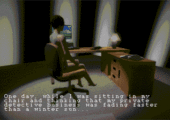
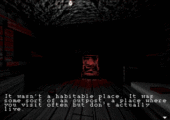
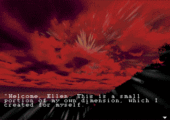
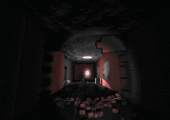
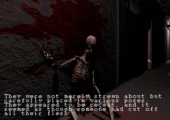
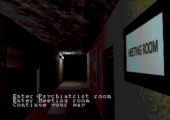
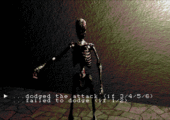
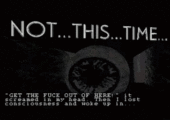
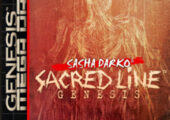
Recent Comments